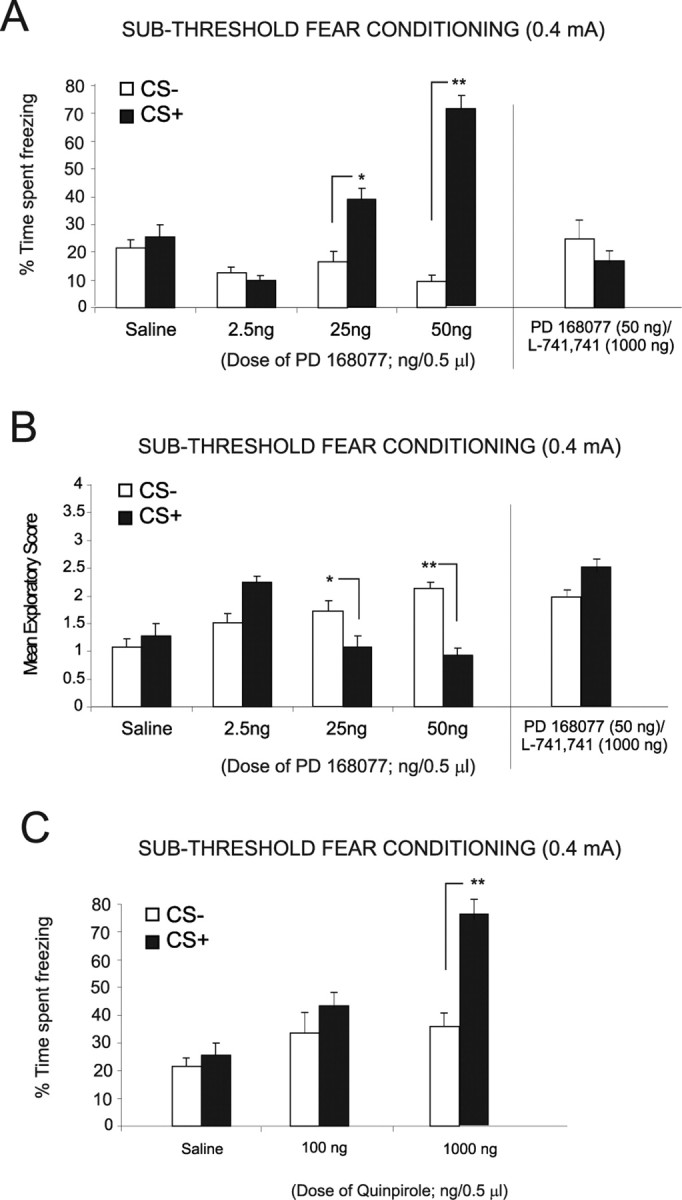Figure 3.

Bilateral intra-mPFC DA D4 and D2 receptor manipulations versus subthreshold levels of fear-conditioning stimuli. A, Bilateral intra-mPFC microinfusions of the DA D4 receptor agonist PD 168077 (2.5, 25, and 50 ng/0.5 μl) dose-dependently potentiated the acquisition of subthreshold (0.4 mA footshock) olfactory fear conditioning. Both saline controls and rats receiving a lower dose of PD 168077 (2.5 ng/0.5 μl) display no significant difference in time freezing to the CS+ relative to the CS− presentations. In contrast, rats receiving higher doses of PD 168077 (25 ng and 50 ng/0.5 μl) display significantly greater levels of freezing specifically in response to presentation of the CS+ relative to CS−. In a separate control experiment, this D4 receptor-induced potentiation was blocked when the D4 receptor antagonist L-741,741 (1000 ng/0.5 μl) was coadministered with PD 168077 (50 ng/0.5 μl), as rats display no significant difference in conditioned freezing behavior in response to the CS+ relative to CS− presentations. B, Measurement of exploratory behavior in response to the CS+ and CS− odors revealed saline control rats and rats receiving the lower two doses of PD 168077 (2.5 and 25 ng/0.5 μl) showed no significant difference in exploratory scores. However, with the 50 ng/0.5 μl PD 168077 dose, there was a significant decrease in spontaneous exploratory behavior after CS+ relative to CS− presentation. Similarly, intra-mPFC coadministration with the D4 receptor antagonist L-741,741 (1000 ng/0.5 μl) with PD 168077 (50 ng/0.5 μl) blocked conditioned suppression of exploratory behavior, demonstrated by no significant difference between exploratory behavior in response to CS+ and CS− presentations. C, Bilateral intra-mPFC microinfusions of the D2-like receptor agonist quinpirole failed to potentiate subthreshold fear-conditioning acquisition at a lower dose of 100 ng/0.5 μl, demonstrated by no significant freezing response to CS+ versus CS− presentations. However, bilateral intra-mPFC microinfusions of quinpirole at a higher (nonspecific) dose (1000 ng/0.5 μl) resulted in a potentiation of subthreshold fear stimuli as demonstrated by a significant increase in the time spent freezing to the CS+ relative to the CS−.
